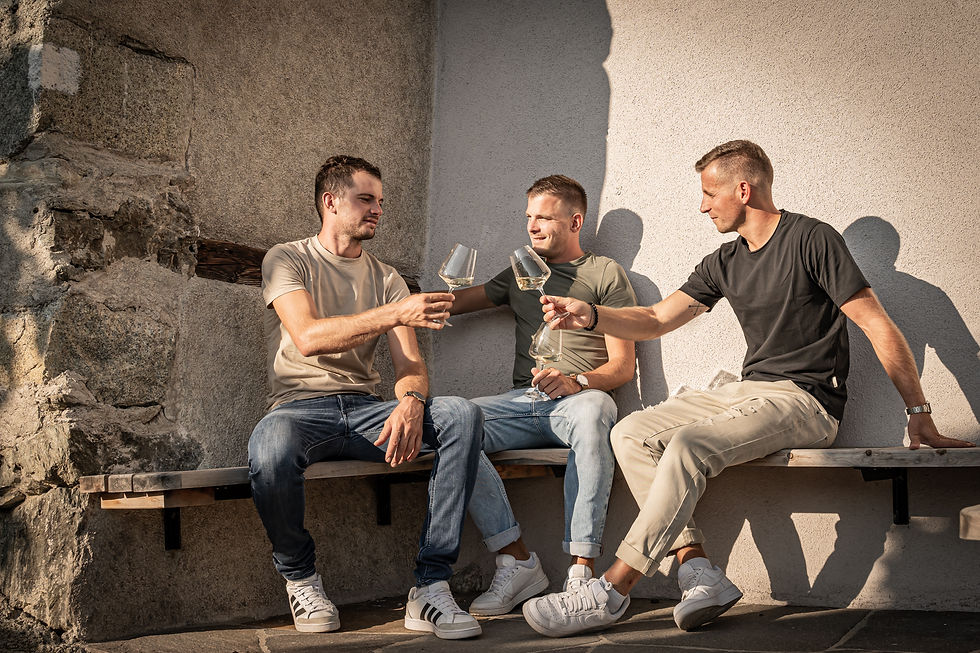The Proper Tasting of Wines: An Art for All the Senses
- Michael Kainzwaldner
- Feb 5
- 2 min read

Tasting wine is more than just drinking a fine drop – it is a journey through aromas, colors, and emotions. It is an art that allows us to explore the character of a wine, sense its origin, and taste the passion of the winemaker. But how do you properly taste wine? Here are the key steps to turn every sip into an experience.
1. The First Impression: A Visual Delight
Before the first drop touches your lips, you perceive the wine with your eyes. Pour it slowly into a glass and hold it at a slight angle against a bright background. Observe the color and clarity: Is it crystal-clear or slightly cloudy? How intense is the color? A young white wine often has light greenish reflections, while a matured red wine may display deep ruby or even brownish hues. The so-called "wine legs" – the streaks running down the inside of the glass – reveal information about the alcohol and residual sugar content.
2. The Aroma: Unlocking the Bouquet
The second step is smelling the wine. Gently swirl it in the glass to release its aromas. Then take a deep breath over the glass. What do you smell? Fruity notes like apple, berries, or citrus? Maybe floral hints of roses or violets? Red wines often reveal spices, wood, or even chocolate. Take your time to explore the diversity of aromas – they are the key to the soul of the wine.
3. The Taste: A Symphony for the Palate
Now comes the most exciting part: the first sip. Take a small sip and let the wine slowly roll over your tongue. Pay attention to the balance between acidity, sweetness, tannins, and alcohol. A good wine is harmonious, with no single component overpowering the others.
What flavors do you taste? Often, the impressions from the nose continue on the palate, but sometimes an entirely new world opens up. Also, notice the aftertaste – how long do the flavors linger after swallowing? A long finish is a sign of quality.
4. The Context: The Story Behind the Wine
Wine is more than just taste – it is culture and history. Where does the wine come from? How was it made? Understanding these aspects makes the tasting experience even richer. A Sylvaner from the steep hills of the Eisack Valley tastes different when you know how the climate, the vines, and the people behind it shape its uniqueness.
5. Savor Mindfully
The most important step in wine tasting is taking your time. Don't be influenced by trends or labels. Your taste is unique, and the best experience is discovering your own personal favorite.
Ready to Master the Art of Wine Tasting?
We invite you to experience the magic of wine up close. Visit us at Weingut Oberfurner in Villanders and immerse yourself in a world full of aromas, stories, and enjoyment. During our guided tastings, we present our finest wines and share tips and tricks for your own tastings.
Book your wine tasting now and discover the diversity of our wines in an unforgettable setting. We look forward to welcoming you!


Comments